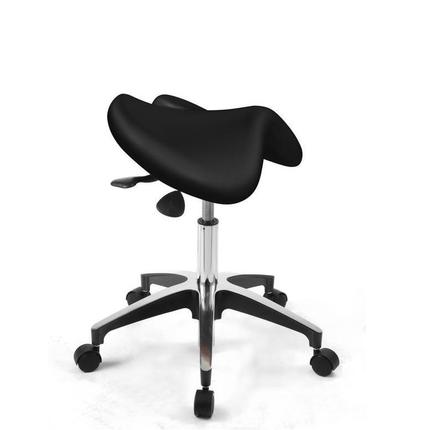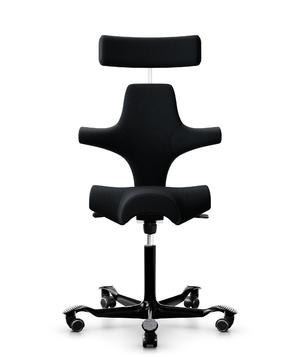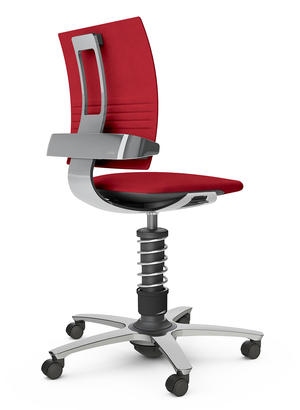Ascot COCCYX Saddle Stool
The Ascot COCCYX Saddle Stool: A completely new anatomical design of saddle stool to help relieve pressure points associated with coccyx issues, whilst providing the excellent postural control offered by the saddle posture.
These ergonomic stools offer a tilting seat mechanism with gas height adjustment and a stylish, compact base.
- Infinitely Adjustable tilt position
- Gas cylinder to adjust the height adjustment of the stool. Available with 3 different heights of cylinder to accommodate all sizes.
- Coccyx Cut-Out Zone
**Please note that the base comes as standard as polished aluminium (Not black as shown)**
Ascot COCCYX Saddle Stool
Product Information
Working with worldwide customers and medical/dental practitioners the manufacturer of the Ascot Saddle Stool were asked to create a stool that had all the ergonomic benefits of a saddle stool but in addition helped to improve the metabolism of the lower discs and specifically the "COCCYX" bone, which is often referred to as the "Tail" Bone at the very bottom of the spine. There are many people that can't bear to have any pressure put directly onto their coccyx/tail bone which can become worse with continuous sitting; this condition could have been caused by a previous injury or a medical ailment.
The brief was to alleviate any pressure build up specifically around the coccyx/tailbone area over continuous sitting....
This has been achieved by making the new Ascot COCCYX (KIMI) saddle with an anatomical cut out at the rear to increase air flow and blood circulation, which removes direct contact with the coccyx bone whilst sitting.... the coccyx bone is 100% free from any pressure point and the new design stabilises the pelvis automatically relieving stress on the lumbar discs and spine. The curvature at the front has been slightly widened which has resulted in a truly Anatomical Saddle Stool.
Some information and facts about the Coccyx/Tail Bone.
The coccyx refers to the last few vertebrae at the bottom of the Spine. The name “coccyx” comes from the Greek word meaning “cuckoo” referring to the beak-like curved shape of the coccyx, which points towards the front of the body.
The coccyx is made up of three small, loosely fused bones that are attached to the sacrum and located just above the cleft of the buttocks. It is sometimes called the 'tailbone' because it’s considered the remnant of the full tail of our ape-like ancestors.
However, it does have useful functions, including:
1] Weight-bearing when sitting down.
2] Serving as an important attachment area for various muscles, tendons and ligaments
Coccydynia
Coccydynia refers to discomfort and pain caused by damage to the coccyx/ tailbone
This is an uncommon condition and it’s estimated that approximately 1 in 100 cases of lower back pain is the result of Coccydynia.
Pain can range from mild to severe and usually worsens when sitting down because pressure is applied directly to the tailbone area
Coccydynia causes
Women are five times more likely to develop coccydynia than men. This is because a woman’s pelvis is wider and the coccyx is more exposed and vulnerable to injury. Giving birth is believed to be the most common cause of coccydynia. During pregnancy the coccyx becomes more flexible to allow more room for birth. However, in some cases, the muscles are overstretched and permanently alter, so that the coccyx is no longer supported, triggering coccydynia.
Other causes include:
- A fall against a hard surface in the seated position, such as a fall from a horse
- A direct blow to the coccyx, such as in contact sports
- Straining or dislocating the coccyx. This can happen due to poor posture while driving, or repetitive injury from sports such as rowing or cycling
- Being overweight or obese may put excess pressure on the coccyx
- Being underweight may create less cushion for the coccyx
- Ageing causes the cartilage that holds the coccyx to wear down or the bones can become fused
- Cancer can occasionally spread to and affect the coccyx
Other less common injuries include bone spurs, nerve compression, infection and tumours. No clear cause can be found in about a third of cases.





